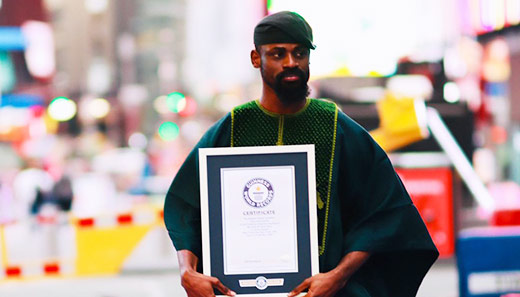90 years since the death of the famous representative of the jewelery empire
There is hardly a woman in the world who does not dream of receiving a jewel in the blue ribbon box of “Tiffany & Co”. To this day, it is probably the most famous jewelry brand, with stores with the most shiny windows that leave one in awe.
The brand “Tiffany” was founded by Charles Louis Tiffany – one of the most successful jewelers of America, but today it will be about his son – Louis, one of the six children of the famous jeweler.
Louis Comfort Tiffany is the third child in the family. He is talented like his father and an enterprising businessman like him. Lewis manages to turn his father’s “disappointment” at not following his beaten path into another spectacular success for the family. He follows his own path in art.
They call him the King of Glass, because he is the author of real masterpieces in decorative art from the time before the wars.
His flower lamps are worth millions today, “but they deserve billions,” as one admirer of the designer exclaims. One example: A few years ago, one of Louis Tiffany’s Water Lily lamps was sold at auction for $3,372,500.
According to a study, there are only 14 such lamps left in the world today, five of which are museum exhibits.
What is Louis Comfort’s story. Naturally, he grew up in affluence, surrounded by beautiful objects and luxury. Probably, apart from the natural gift, it was this unique environment that stimulated his imagination from a young age and developed his sense of beauty. Lewis paints and has a keen interest in the arts. He received an excellent art education, had finances with which he could travel the world. He got all the way to Africa, where he was literally captivated by the bright colors, the exotic nature and the ornaments of the temples. He is particularly impressed by the glass ornaments and stained glass windows.
Louis Tiffany began his artistic training after graduating from the Military College of Pennsylvania (now Widener University) and the Eagleswood Military Academy. He went to New York and New Jersey to study with the best landscape painters – Samuel Coleman and George Innes.
His first solo works were as a painter. In 1875, however, his interest in glass “returned”, which had dominated his imagination since his first encounters with stained glass in temples around the world. He traveled around Europe and after his return to the States he started working at the National Academy of Design in New York.
In 1878, together with three other people, among whom is one of his teachers – Samuel Coleman, he founded the company “Louis Comfort Tiffany and Associated American Artists”, with a direction – production of glass products.
The company’s products gained great popularity from the very beginning. Even the company received an invitation from the White House to deal with the decoration of the palace. There are reports that some of the occupants of the White House over time did not appreciate the beauty and Tiffany’s unique pieces were destroyed during the renovations.
During the work of the company for glass decorations, disagreements arose between the partners and the company broke up, but Louis Tiffany founded his own company “Tiffany Glass Company”, known after 1902 under the name “Tiffany Studios”. “Tiffany Studios” functioned until 1932, but the fame of what it created does not fade to this day.
The designer made jewelry, ceramics, lamps, enamel, glass, mosaics and large-scale stained-glass windows in his studio. Tiffany lamps became his trademark. Tiffany-son created a unique style in colored glass, for which purpose he founded a factory in “Queens” – “Stourbridge Glass Company”, which was later called “Tiffany Glass Furnaces”.
Louis Tiffany constantly experimented, developed his own method of work, different from that in Europe and created a new type of glass with an iridescent color, which became popular under the name Favrile. In 1894, Tiffany patented his invention. At the next stage of his experiments, he began to combine favrila with bronze alloys and other metals.
Tiffany became a world leader in the production of glass and one of the leaders of the Art Nouveau style.
For the first time the world saw his unique lamps at the World’s Fair in Chicago in 1893. After six years, after the exhibition in Paris, it occurred to him to experiment with the so-called blown glass. Louis, to his father’s pride, was also awarded the title of Chevalier of the Legion of Honor.
He was elected a member of the National Society of Fine Arts in Paris and the Imperial Society of Fine Arts in Tokyo.
In 1902 old Tiffany died and Louis took his place in the company “Tiffany & Co”. In 1919, the designer created the “Louis Comfort Tiffany Foundation” with the aim of supporting gifted art students.
Although he became so famous for his lamps, which are still admired at world auctions today, according to connoisseurs, Louis Tiffany’s strength is in stained glass. He masters this difficult technique to perfection and makes truly amazing stained glass windows with landscape and religious themes. The young Tiffany worked with teams of great master furniture makers, glaziers and weavers, and was a remarkable perfectionist. Over 300 masters worked in his studio.
He liked to spend almost all his time in his glass factory in “Brooklyn” and conduct his experiments there. He did not hide that he borrowed a lot from the great Emile Garet of Nancy, whom he met at the Paris Exhibition.
Where are the Tiffany stained glass windows today? – Unfortunately, many of them have long been lost.
As for the lamps, according to Louis Tiffany’s biographers, they were created…accidentally? According to one of the reports on this issue, the idea for the lamps came to him after he noticed that there were many unused beautiful glasses from the stained glass windows, which the masters began to arrange in small colored lampshades as a game. In 1906, bedside lamps were in fashion and Tiffany Jr. became their king. And why are his lamps in flowers? – The answer is simple – Louis was a passionate gardener and in his free time, when he was not at the glass factory, he was found in his greenhouse.
During the wars, these beautiful lamps began to disappear. Some are known to have been melted down for their bronze base. Bronze was needed for cartridges. A cruel joke with beauty, but a fact!…Over three hundred Louis Tiffany lamps have been destroyed, others disappear into obscurity.
In the 1970s, fakes claiming the Tiffany brand began to be offered in America. Connoisseurs quickly exposed the fraud, but the ersatz also found a market. The real lamps of Louis Tiffany were handmade – each glass on them had a special shape and color.
One of the most expensive lamps – “Lotus”, survived and was sold in 1997 at an auction for a fabulous sum.
Some time ago it was reported that the designer of the Tiffany lamps may have been not only Louis Tiffany, but also a woman named Clara Driscoll. She was one of the “Tiffany girls” who made the lamps by hand.
Louis Tiffany was born on February 18, 1848 in New York and died on January 17, 1933 at the age of 84. 90 years ago. He has two marriages, with four children from each of them. He entered into his second marriage after the death of his first wife, as a widower. Of all his children, the last to die in 1979 was his daughter Dorothy, who was a child from his second marriage.
Tiffany’s descendants are prominent figures in various fields, including politicians and academics. Only Louis Tiffany’s great-grandson – Dr. Rodman Miller from Seattle – followed in his great-grandfather’s footsteps – working with glass.
It is curious to mention that the designer decorated his own residence, an 84-room house called Laurelton Hall, in Oyster Bay, Long Island. It was completed in 1905 and Louis Tiffany donated it to his foundation to support art students. He donated the house along with a huge area of land. Unfortunately, this magnificence was destroyed by fire in 1957.
Today, many experts believe that not only Tiffany lamps and stained glass, but also glass mosaics for fireplace decoration deserve a high rating. “Louis Tiffany’s mosaic work is no less magical than his other works,” says an expert. When the revival of the popularity of American ceramics began at the beginning of the 20th century, Tiffany also opened a pottery studio. Louis had been an admirer of French ceramics since his first trips to Paris.
Photo: Louis Tiffany’s Dragonfly Lamp




















Discussion about this post